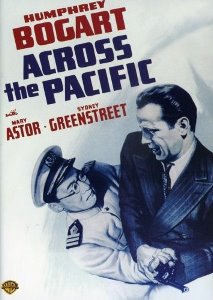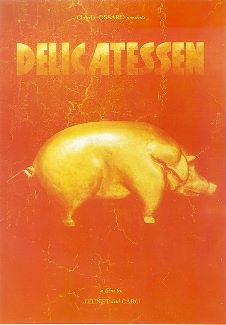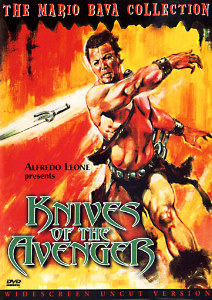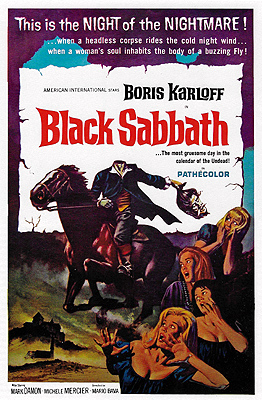1942: Across The Pacific
Across The Pacific (Huston/Sherman, 1942) 3/10
 By the early 1940's, audiences associated Warner Brothers with its trademark qualities of grit, toughness and bluntness. Stars such as James Cagney, Bette Davis and Humphrey Bogart detailed these embodiments with their flavourful, often brutal performances.
By the early 1940's, audiences associated Warner Brothers with its trademark qualities of grit, toughness and bluntness. Stars such as James Cagney, Bette Davis and Humphrey Bogart detailed these embodiments with their flavourful, often brutal performances. Another trademark of the studio in the early part of the decade was in its infatiguable attempts to recapture the magic of previous successes such as John Huston's 1941 Noir The Maltese Falcon and Michael Curtiz's 1942 wartime romance Casablanca.
Huston's 1942 film Across The Pacific tries to earnestly and cognizantly recall the brooding sensibilities, fraudulent personalities and deceptive humour of his début The Maltese Falcon. Reuniting three of the four prinicpal cast members (Humphrey Bogart, Mary Astor and Sydney Greenstreet) along with director John Huston, the studio desired to reclaim the accomplishments of the latter project, coupled with a wartime tint. They failed.
Ejected from the U.S. army for stealing money, Rick Leland (Humphrey Bogart) wanders north to Canada in order to exercise his skills.Yet, due to his earlier disgrace the Royal Canadian Forces in Halifax are unwilling to utilize his services either. Dejected, he stumbles into a travel agency, where he notices an attractive Canadian woman Alberta Marlow (Mary Astor) procuring a ticket on a Japanese steamship in order to return to Medicine Hat, Alberta via Vancouver.
Intrigued and lacking in domestic opportunities, Rick hopes to either find love or employment under Chiang Kai-shek's Chinese nationalist forces by the end of his voyage. On board, Rick meets few passengers. Among the few travellers, there is a British sociologist Dr. Lorenz (Sydney Greenstreet) returning to lecture in the Philippines with a curious infatuation with Japanese society and a talkative second generation Japanese-American, Joe Totsuiko (Victor Sen Yung) returning to his ancesteral homeland to work in his family's businesses.
Despite the potent casting, Huston's film is a mess: a jumble of genres, tones and atmospheric moods. Starting with Bogart's dismissal from his post in Panama, the director creates a sense of anticipation, awaiting Bogart's abilities to correct both his personal demons and the errors of the state. What ensues is a convoluted pastiche part action film, part Thin Man sleuth comedy. Bogart and Astor become less the tawdry, virulent couple shown in The Maltese Falcon as their characters become more inclined to replicate the bubbly hijinks equated with William Powell and Myrna Loy. Arguably, one should not assume Huston would desire to continue the personalities of his earlier film, yet the setting and tone of Across The Pacific is chiefly suited to such poisonous methods.
Despite its title, the film fails to even sail into the Pacific. Prior to filming, the studio opted to change the setting from pre-war Hawaii to the more isolated southern locale of Panama, yet keep the original title. Given the sentiments of Huston's film, it is easy to assume why. The director's emphasis on the forced humour between Astor and Bogart on the one hand, and the sinister relationship between Bogart and Greenstreet on the other, would be ill-fitted to a Hawaiian setting in 1941. The director's over-indulgence in the banter between the sexes, rather than one man's quest to protect his nation would certainly be at odds with the spectre of heroism and patriotism necessary within a film set on the politically sensitive shores of Hawaii.
For a wartime product, Huston's film is strangely more indebted to its queasy romantic-comedy storyline than the necessity to protect American soil. One of the film's most interesting facets is Bogart's muted patriotism. Utilizing a skilled plot twist after more than half an hour of sugary romance, Huston offers Bogart's character a sense of national duty. Yet, there is little pride that Bogart carries with his newfound occupation. Flag-waving and hyperbolic patriotism are almost non-existent throughout Across The Pacific. Cultural ignorance however remains at the forefront.
Racist attitudes via stereotypes and malignant cartoonish appropriations of Japanese culture permeate Across The Pacific. Almost all of the Japanese characters are short, male and stone-faced. Their emotionless expressions are evident in their stereotypical wire moustaches, thick Coke bottle glasses and heavily accented broken English. Joe Totsuiko is an exception in that he is garralous and overly friendly: a trait one assumes is related to his perceived Americanized upbringing. Yet, in the film's language and tone, these All-American traits are worn as a costume designed to mask the hidden malicious characteristics the film duly associates purely with Oriental characters and their admirers.
Greenstreet's rotund Lorenz is one of those followers. His cultured appreciation for haikus, judo and his fluency in Japanese is not a sign of worldly education, but as with other films of the era this signifies his deceptive baseness. In contrast, the film's North American characters are often hostile and suspicious of their Asian crew and fellow passengers. Both Astor and Bogart embarassingly claim the Japanese are purely homogenous in their facial features. Upon hearing a delicate haiku translated by Lorenz, Astor's character woefully responds in front of two Japanese men that she believes the Japanese do have "emotions like us."
Bogart's mistrust of Joe Totsuiko is evident in his avoidance and snappy rhetoric toward his fellow passenger. Upon arriving in Panama, it should be noted that Bogart's closest colleague on the thinly composed Central American country is an Asian hotel clerk named Sam. Furthermore, Bogart frequently works with Asian coworkers in Panama in order to expose a chilling secret about the ship's passengers and crew. Yet, Huston's film tends to tar all Japanese nationals and Japanese-American citizens with the same close-minded brush: assuming all are willing participants in the development of a war mongering Imperial Japan. Attitudes which resulted in the abbhorent seizure of thousands of citizens of Asian descent throughout the United States and Canada during this period.
Across The Pacific serves as an interesting mid-point between Bogart's work in The Maltese Falcon and Casablanca. Donning the similar trenchcoat and hat as in the former, Bogart's character in Across the Pacific adds a greater sense of romance to the proceedings. Furthermore, the backstory of a jilted American turned isolationist with a friend named Sam complies the characteristics of Bogart's character- also named Rick- in Curtiz's masterful film released the same year.
Yet, despite its slick performance by Sydney Greenstreet and Bogart's patented irascible lead, Across The Pacific drifts in a dull fashion along its filmic ocean. Astor's character is flat and uninspired, while Victor Sen Yung achieves a decent effort in another of his continually marginalized and stereotyped performances during the decade.
While Vincent Sherman took over the reins for the film's action-packed finale after Huston was called up for military service, the responsibility for this slow, turgid mess does not fall into his hands. This guilt falls squarely onto John Huston's palms in a picture that ultimately seems ill-suited to his propensity for demonstrating the heart of darkness, rather than fluffy romantic escapades and comedic timing.
* Across The Pacific is available in Warner Brothers' Humphrey Bogart Signature Collection Vol 2.
Other John Huston Films Reviewed:
The Unforgiven (1960) 7/10
The Night of the Iguana (1964) 9/10
Copyright 2007 8½ Cinematheque











